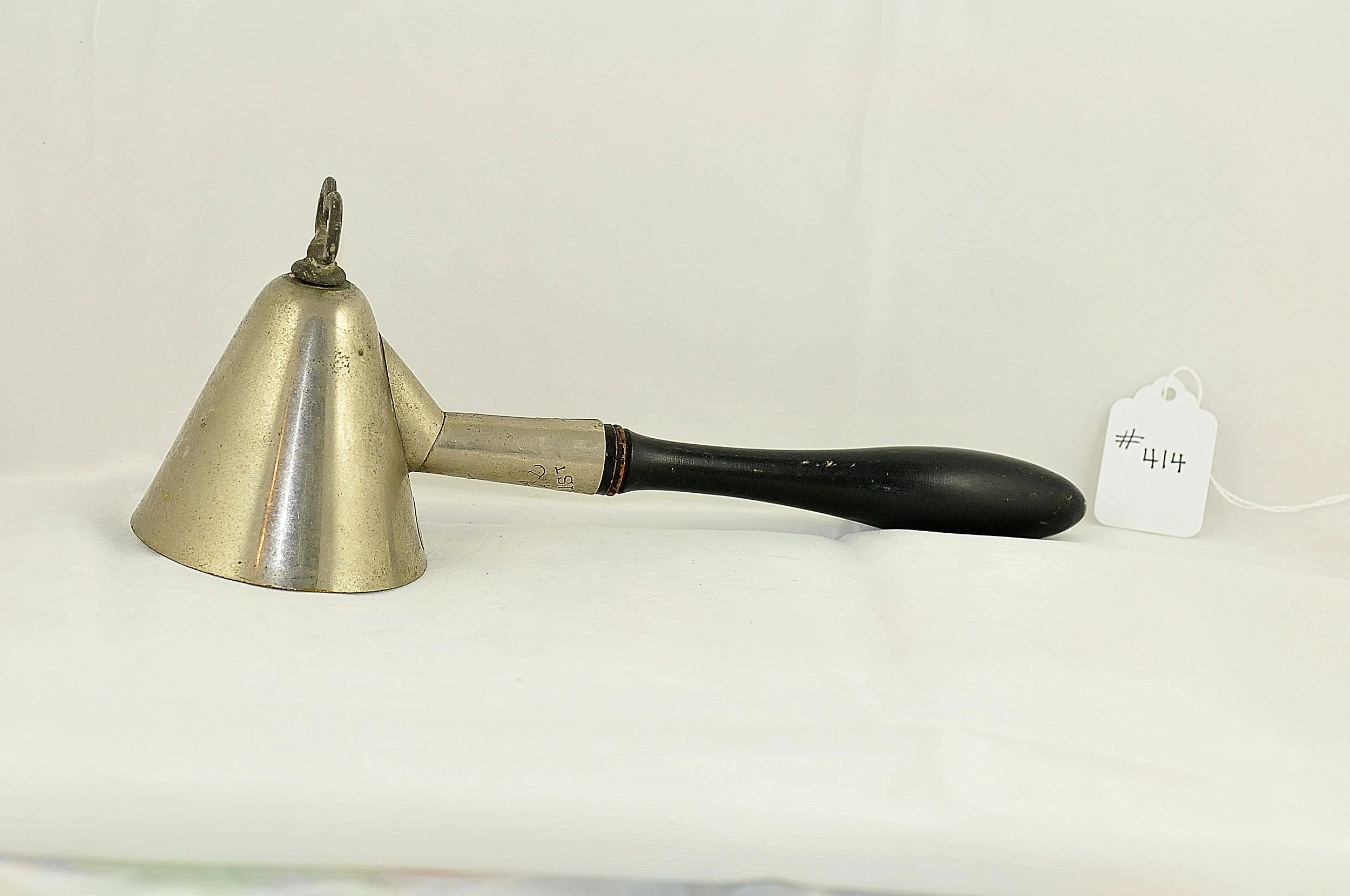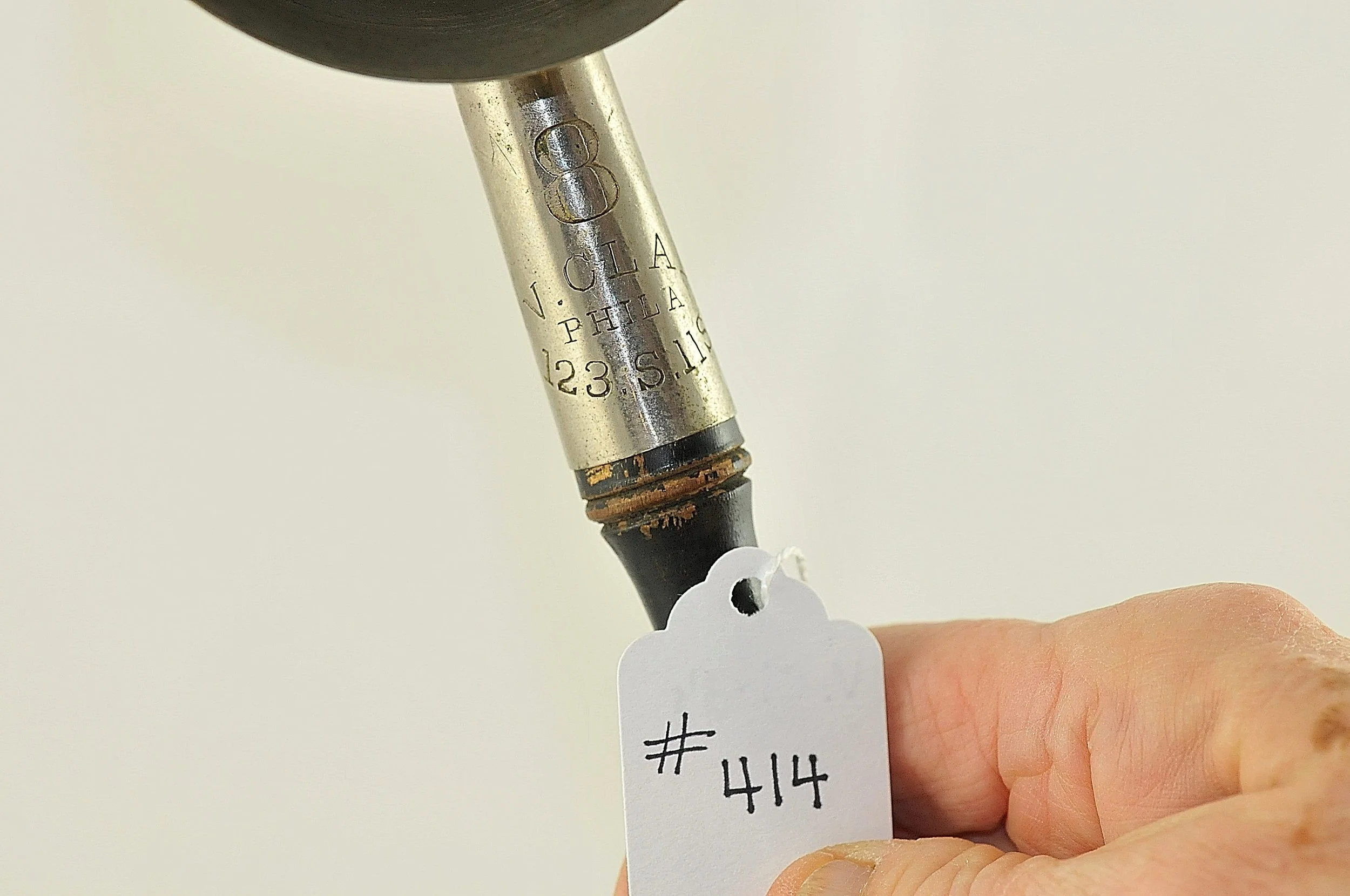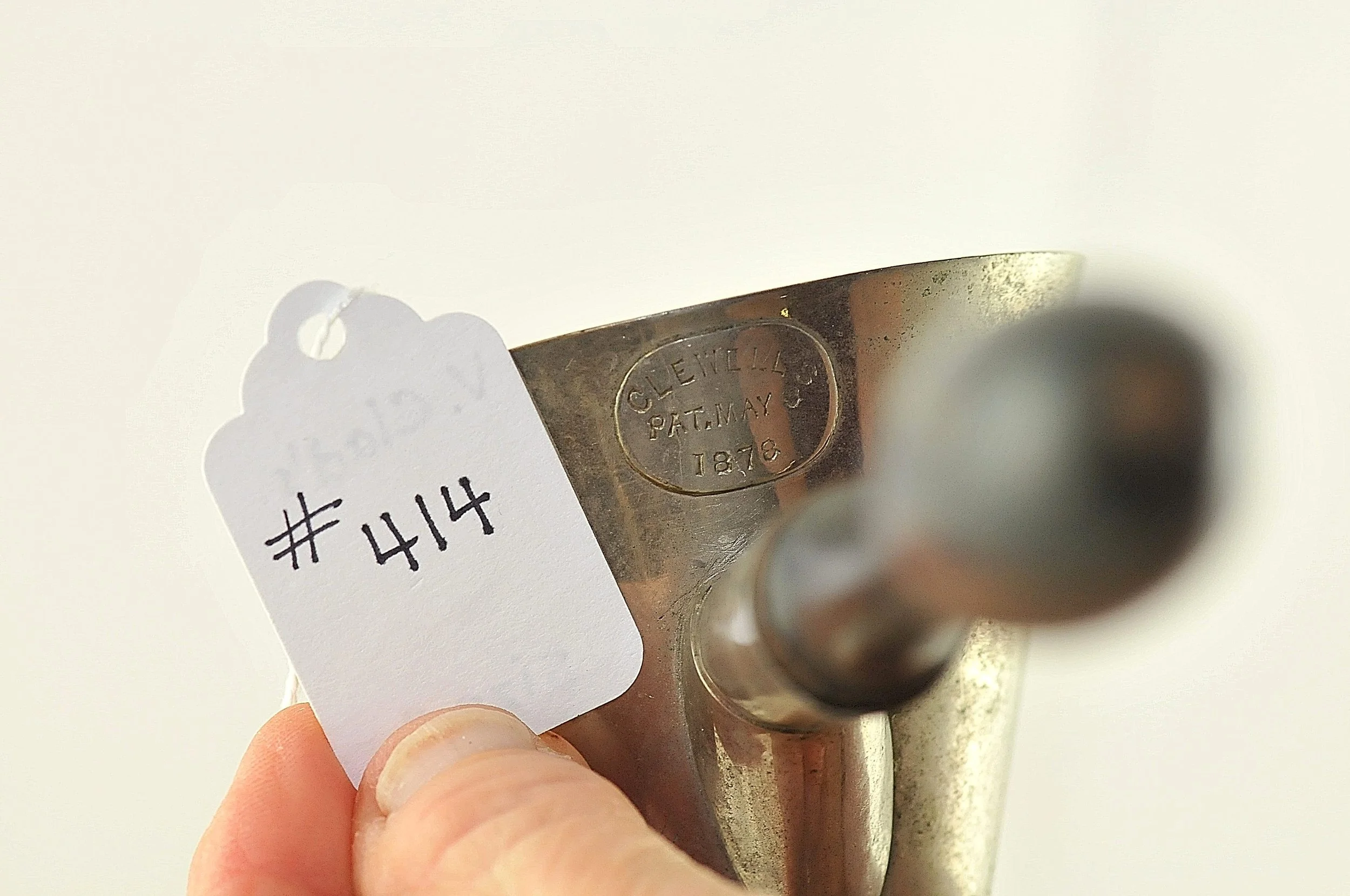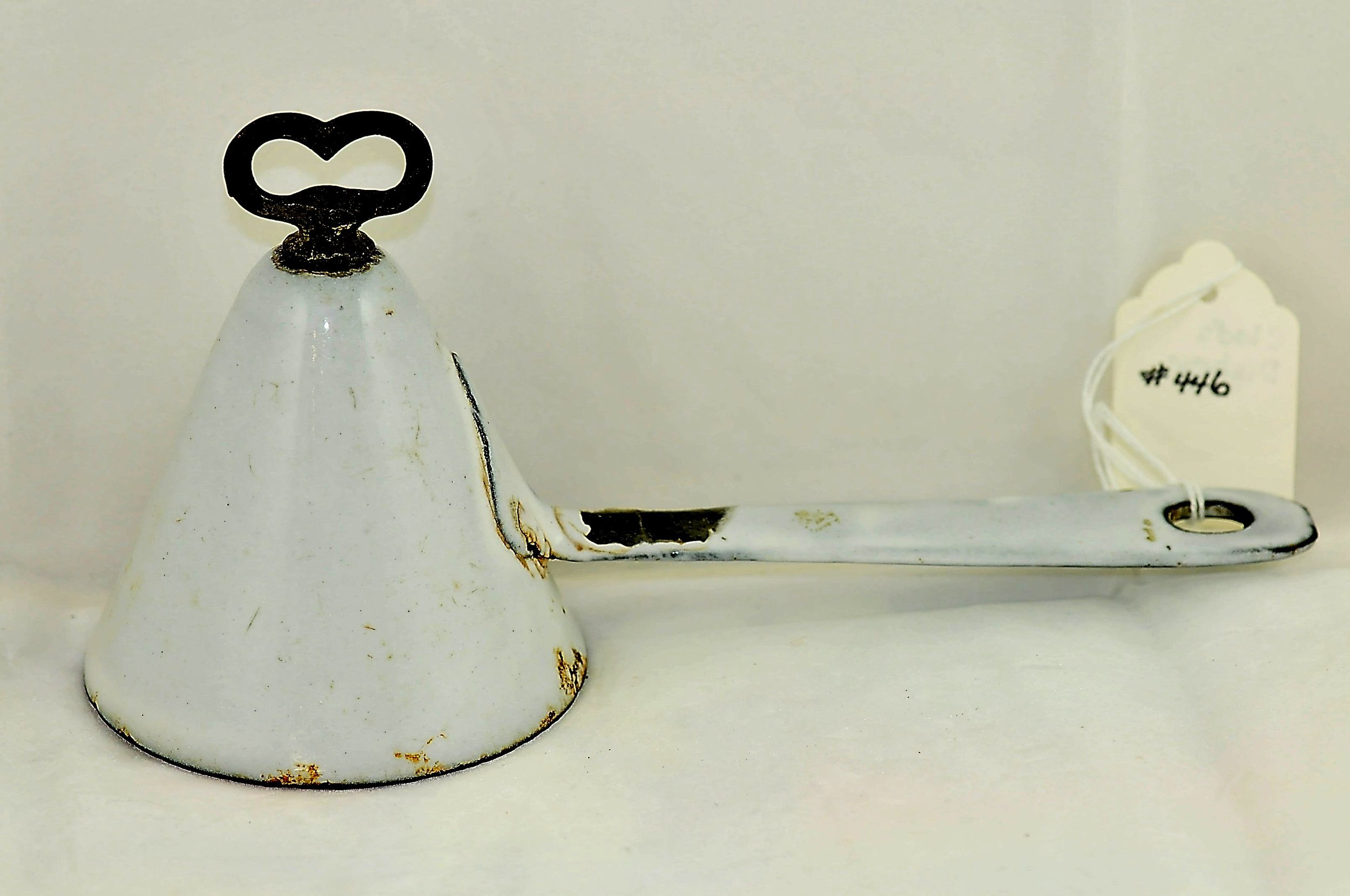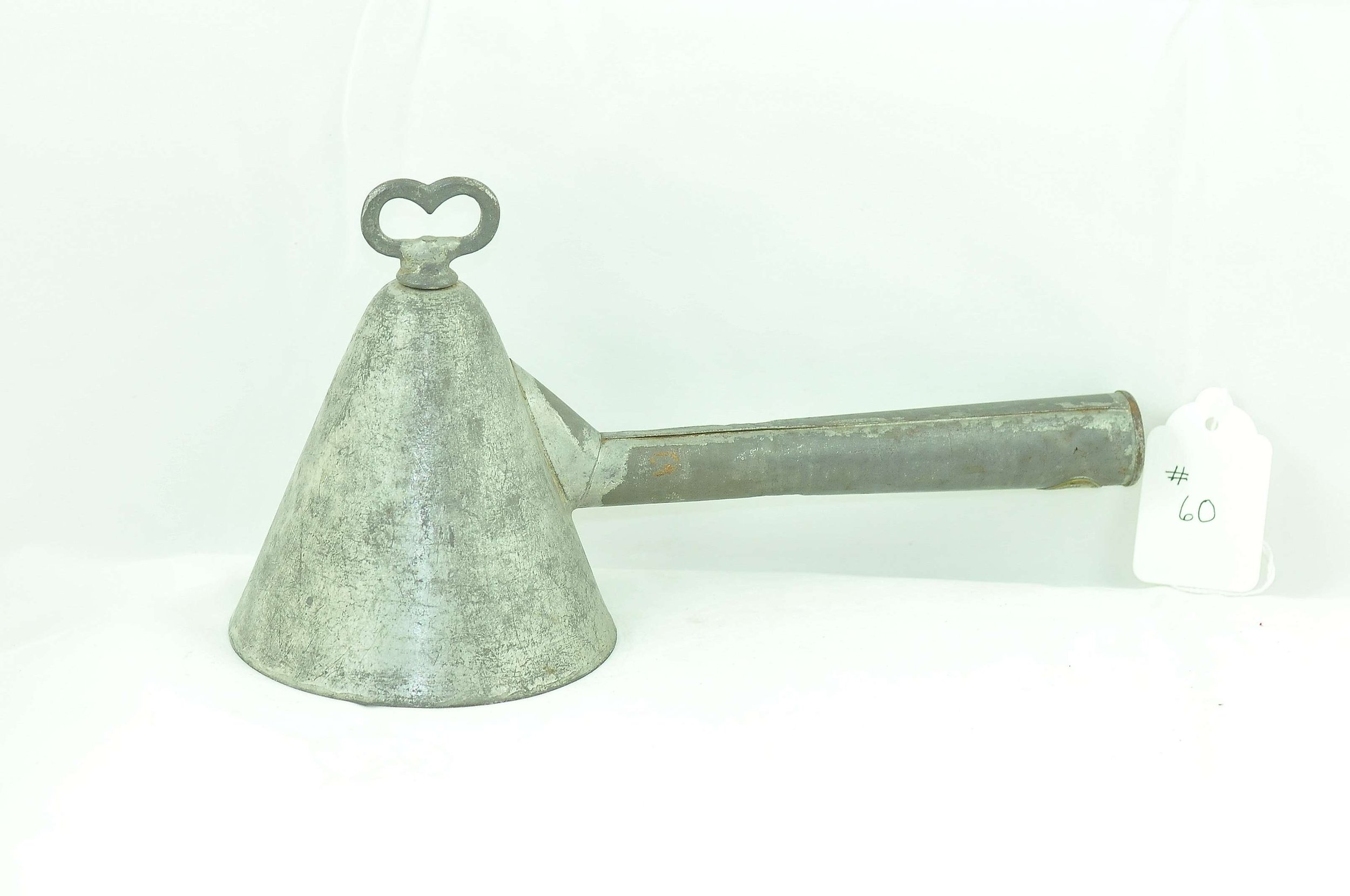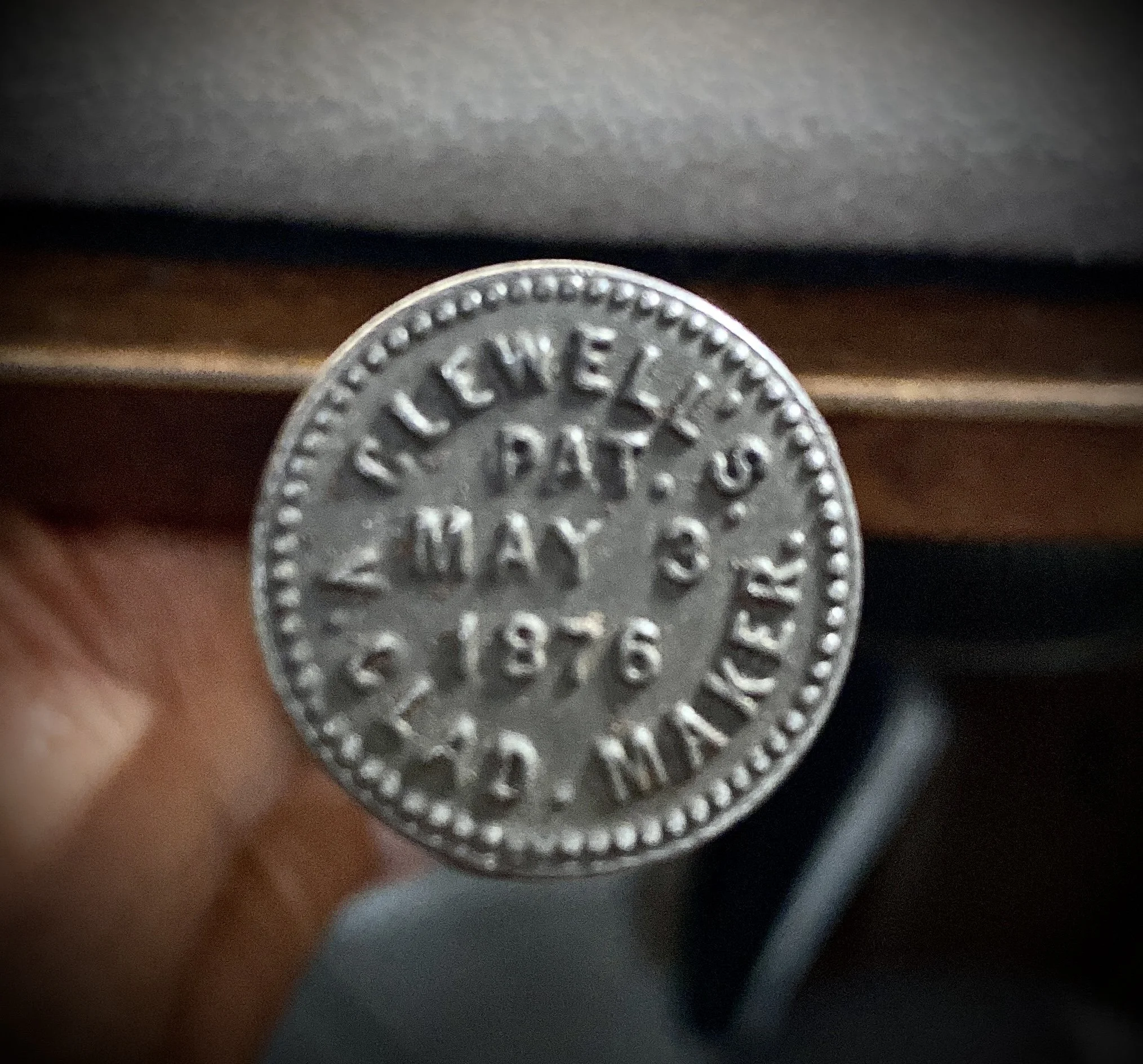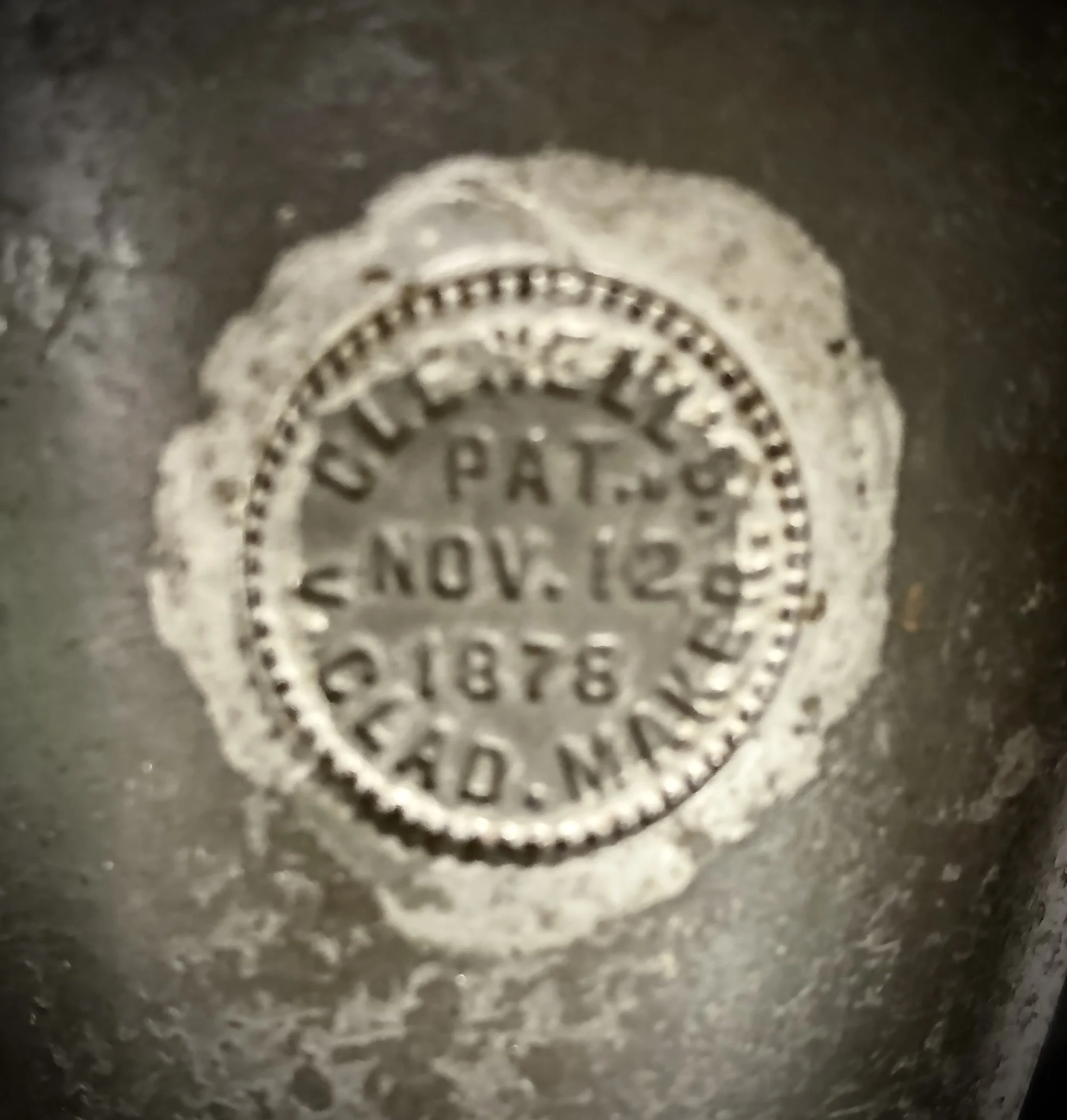“What is the oldest scoop in your collection?”
I often get this question, and the answer is, “The oldest is the first.” In the mid-1870s, while running his confectionery business, George William Clewell, contracted with Valentine Clad, a Philadelphia tinsmith, to fabricate a tool to aid in the measuring, molding, and delivery of a single serving of ice cream. In 1876 the first device that was dedicated to this service was produced.
In the book…Smith, Wayne (1991), Ice Cream Dippers: Inventors, there is a detailed chronology of this merger.
An in-depth look at Clewell and his vision is provided in the Ice Screamers newsletter …Cary, M.J.(2017), George William Clewell Dishes Ice Cream History. Enjoy this tribute to the man and his vision that began this ice cream scoop “parade of innovations.”
Drawing…Patent for the first ice cream scoop.
Specifications…Patent for the first ice cream scoop.
The first ice cream scoop patent was awarded on November 12, 1878. However, the first scoop was fabricated for distribution on May 3, 1876. The early Clewell’s/Clad offerings were nicely labeled as a Clewell product that Clad manufactured. These labels also included the Patent date. These dates were a bit misleading since the first labels indicated Pat. May 3, 1876. This was two and a half years before the patent was awarded. There was also a label on some examples that indicated a date of May 3, 1878. I have no hard evidence, but I believe, given reasonable assumption, that the scoops labeled with the early dates were made before the actual patent award and that all subsequent labels would carry the exact Patent date. See labeling details later in this blog.
Additional confusion was created with the design drawing for this scoop. Since the scoop had been produced two years before the patent submission, you would have thought that the drawing would be a more accurate reflection of the actual device. Notably, the drawing shows that a rim of sorts was fabricated at the bowl’s opening. This was not included in any examples that I have seen. I have seen a Clad’s made scoop that did have this rim without mentioning Clewell. The thumb operator for turning the wipers looks more like a spigot knob than the heart-shaped finial that the V. Clad’s made items included. Also, the only Clewell credited scoop I have seen with a wooden handle pressed into a metal frame, as inferred in the drawing, was one with nickel plating and the May 3, 1878 date on the badge. This date is close to the date that the patent request was submitted. This nickel plating was not common with these early ice cream scoops, and the handle of the example I am referring to was eloquently turned and not necessarily as robust as would be indicated by the drawing. Could this have been a presentation model of this scoop?
The more common model of the Clewell scoop was much more utilitarian in design. These devices were made of tin and steel and in most cases were only poorly coated or not coated at all. As shown above, some did have a nice coating of nickel and some were enameled as shown below.
The common understanding is that Clewell’s scoop was manufactured with a conical-shaped bowl. From this, the common thought is that the first ice cream scoop utilized a conical bowl. However, Clad did fabricate a round-shaped bowl scoop under the Clewell patent. The examples of this scoop that I have seen include the badge with the May 3, 1876 date. Since this would have been one of the early models, could the first scoop have had a round bowl? I think this is unlikely, but this could have been the case without confirmation.
Clad produced Clewell scoops in only 5 sizes. 4,5,6,8,10 scoops per quart. I have only witnessed the round bowl model in sizes 4,5 per quart.
Aside from the one model with a wooden handle shown above, the Clewell scoop handle designs utilized one of two shapes. One was a solid and nearly flat metal shape, and the other was a tubular shape. The latter feels better in hand, but it did tend to get beat up a bit with tapping the handle on the container or counter.
The Clewell/Clad designs included labeling and badging to a greater extent than most of the manufacturers that followed. Both Clewell’s name and Clads name, along with the patent date, were included on most models. This labeling would either be placed on a metal badge soldered onto the bowl or stamped onto the end cap of the tubular-style handles. It was also common to see the address of Clad’s fabrication facility. The bowl size can also be found stamped onto the handle.
I also have seen a model with a distributor’s (Thomas Mills Bros.) badge added.
Clewell’s scoop must have been well received, as it was still being marketed some 15 years after the original start of fabrication. Sometime between 1891 and 1914, Clad stopped advertising the Clewell model and started promoting his model of basically the same scoop. Clad’s model was called the Clad’s Disher. The Clad’s offering had a different handle design, and more bowl sizes were available through size 20. Clad’s model generally reserved the labeling for the wiper blades. I don’t know exactly when this transition occurred, but you can extract this assumption when looking through the catalogs from those two dates.
Clad’s catalog 1891
Clad’s catalog 1914
